
Solana’s new token-2022 program promises to shake up the crypto space’s most scalable network. The Solana blockchain has often been criticized for its underdeveloped DeFi scene. However, the rollout of the creative 2022 SPL token program aims to address these problems and breathe new life into the leading ‘Ethereum Killer.’
SPL 2022 gives Solana’s on-chain programs greater flexibility and opens the door for inventive new projects and applications to build on Solana. The new features are not crypto-exclusive; NFTs on the network also benefit from the new token standard.
What exciting new functionalities does Solana token-2022 offer, and how will they improve the Solana ecosystem? Which platforms have already integrated SPL 2022, and is this open-source metadata safe to use?
Table of Contents
What Is the Solana Token-2022 Program?
Like Ethereum-native ERC-20 tokens provide a consistent set of rules and conditions on the Ethereum blockchain and other EVM networks, Solana’s SPL token standard is the basic architecture for cryptocurrencies and NFTs living on Solana. Since 2020, Solana Labs has been developing an extension to these basic rules called the SPL 2022 token program.
Why Do We Need It?
Compared with Ethereum’s token standards, Solana’s SPL (Solana Program Library) and SDKs (Software Development Kits) are somewhat limited. This has meant that developers innovating on the Solana blockchain have often needed to fork the basic token program to suit their needs and add new functionality.
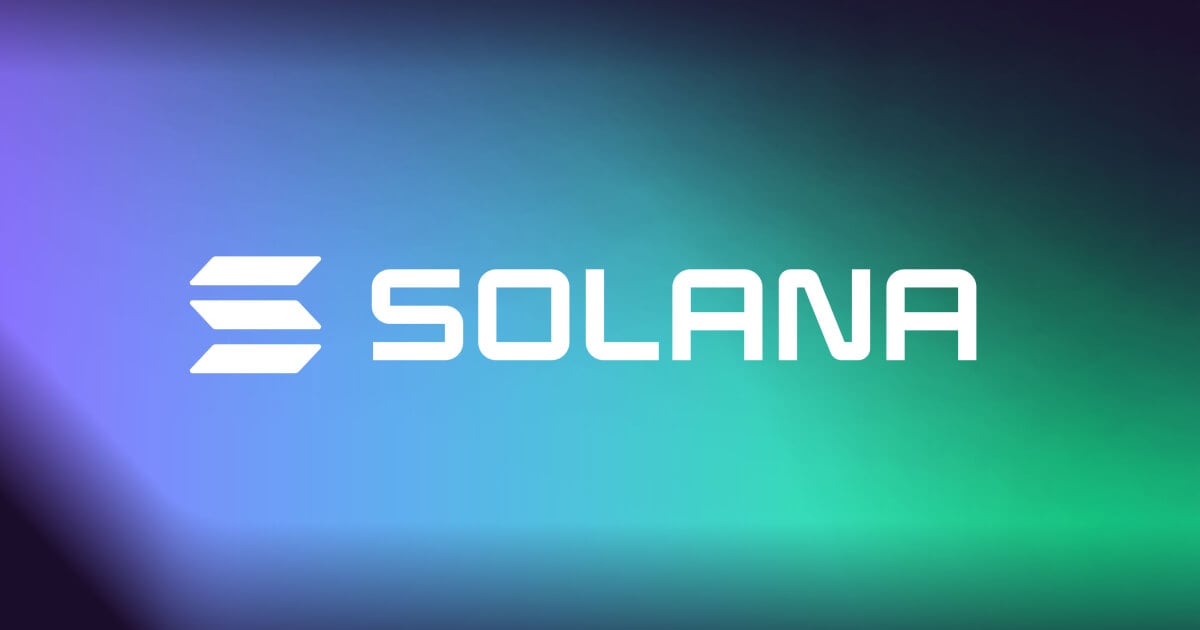
This has meant that while plenty of different SPL token standards are floating around on both the Solana Mainnet and Devnet, there isn’t a single unified standard supported and integrated with popular applications.
Until now.
Sponsored
SPL 2022 aims to bring new utilities to cryptocurrencies and NFTs on Solana while setting a new standard for the blockchain that is safe and interoperable in all apps across the network.
Solana SPL 2022: New Functionalities
What exactly is Solana Token-2022 capable of, and how will it change how we use the network? I’ve rifled through the SPL 2022 docs and GitHub records, so you don’t have to.
Let’s briefly review the SPL 2022 extensions in plain English and see how they can be used.
Transfer Fees & Hooks
Reflection and rewards tokens, like BabyDogeCoin, are a dime a dozen on EVM-based networks. These tokens charge small taxes on buy/sell transactions and either burn them or distribute them among existing holders.
The SPL 2022 token program introduces this functionality to the Solana blockchain, bringing another layer of excitement to meme coins on the network. For example, BonkEarn ($BERN) is a Solana meme coin that automatically rewards holders with BONK tokens.

Transfer Hooks are a similar tool that makes it possible to create custom programs that execute whenever SPL 2022 tokens are transferred between wallets. One of the potential use cases of these token transfer hooks is that they give artists and creators the right to enforce royalty payments at a contractual level, which provides a timely solution to NFT royalty wars.
Confidential Transfers
The new Solana token 2022 program uses zero-knowledge proofs to encrypt transaction data, like token account balances and transfer amounts. These confidential transfers give users greater security and privacy when transacting funds on the Solana blockchain.
Interest-Bearing Tokens
Interest-bearing tokens provide a method for a digital asset to prove its accumulating interest and value over time in a transparent, on-chain format. This is useful for representing traditional financial assets, like bonds, on the Solana blockchain.
It’s important to note that this feature doesn’t create new tokens to increase the value of the holding; they adjust the value of interest to reflect the accumulation of value over time.
Non-Transferable Tokens
As the name suggests, non-transferable tokens are locked to their original wallet and cannot be sold or moved. These are also called SoulBound tokens in other parts of the industry and are a crucial piece of blockchain technology.
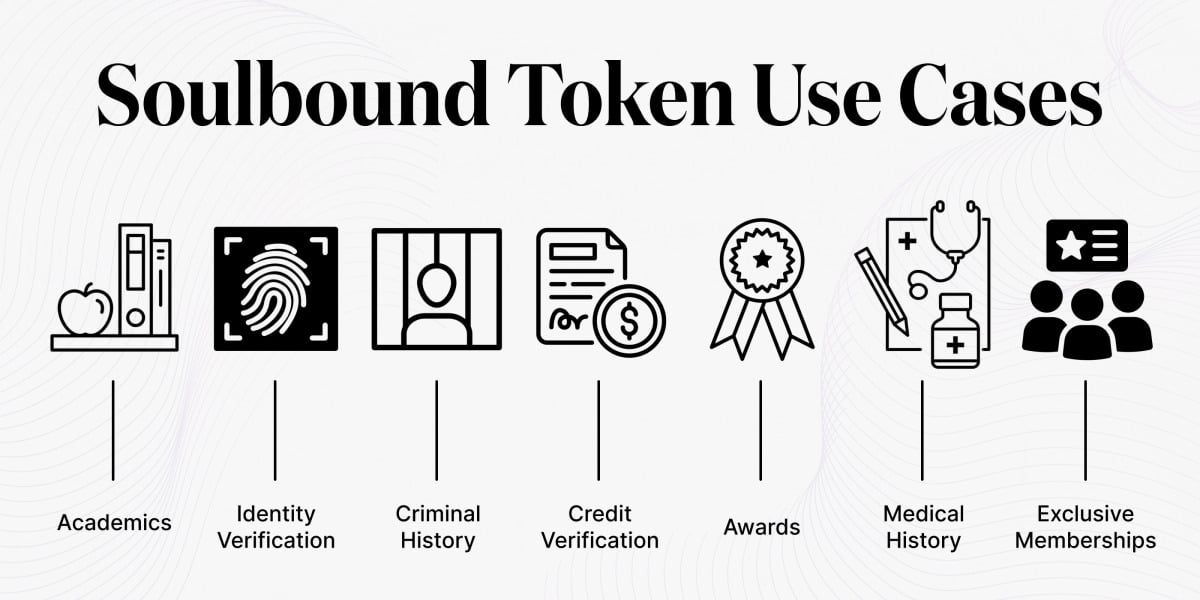
Non-transferable tokens are ideal for representing achievements and awards, like your University Degree on-chain. The Saga Genesis NFT collection is an excellent example of non-transferable tokens in action. Early buyers of the Solana Phone have exclusive access to crypto rewards and upcoming NFT mints on the network.
Closing Mint Function
Previously, only the original wallet had the power to close a token mint program for SPL tokens. With SPL 2022, original owners can designate other wallet addresses and allow them to close mint accounts within the original wallet.
While this doesn’t change much for the average user like you and me, this is a helpful security and interoperability feature for teams building products and services in the Solana ecosystem.
‘Memo Required’ Transfers
You know how when you send a bank transfer to a friend, you can attach a reference to the transfer, like ‘Rent, Gas or Groceries’? Memo-required transfers apply this logic to cryptocurrency transactions. Solana users can directly hard-code memos and messages into their transactions, which will live on the blockchain forever.
Immutable Account Ownership
This extension makes transferring ownership of a token account to another wallet impossible. This is an important security feature as the Solana blockchain expands and develops a wider ecosystem of interoperable DeFi applications.
Default Account State
With the Solana token 2022 program, token creators have greater control over the distribution and usage of SPL tokens. For example, tokens can be frozen before an airdrop to ensure bad actors don’t prematurely add liquidity to new pairs and disrupt a crypto project’s token launch.
Permanent Account Delegate
A permanent account delegate can manage all SPL tokens minted from a specific account. This allows the delegate to burn and transfer tokens, even if they live in someone else’s wallet.
To be honest, this rings some alarm bells for me. I appreciate this extension has important real-world use cases, like asset seizure in the case of loan defaults or sanctions, but it has strong overtones of centralized authority and contradicts the essence of what blockchain technology is trying to achieve.
Delegate privileges are a dangerous tool, especially in the crypto industry. However, all these new SPL extensions are optional, meaning that developers are able to remove this function from their tokens to give their holders peace of mind.
What Does This Mean for Solana DeFi?
Ethereum maxis have constantly ridiculed the Solana ecosystem and its limited DeFi capabilities. The advent of the Solana SPL 2022 token program means developers have a broader range of tools and features to build creative applications.
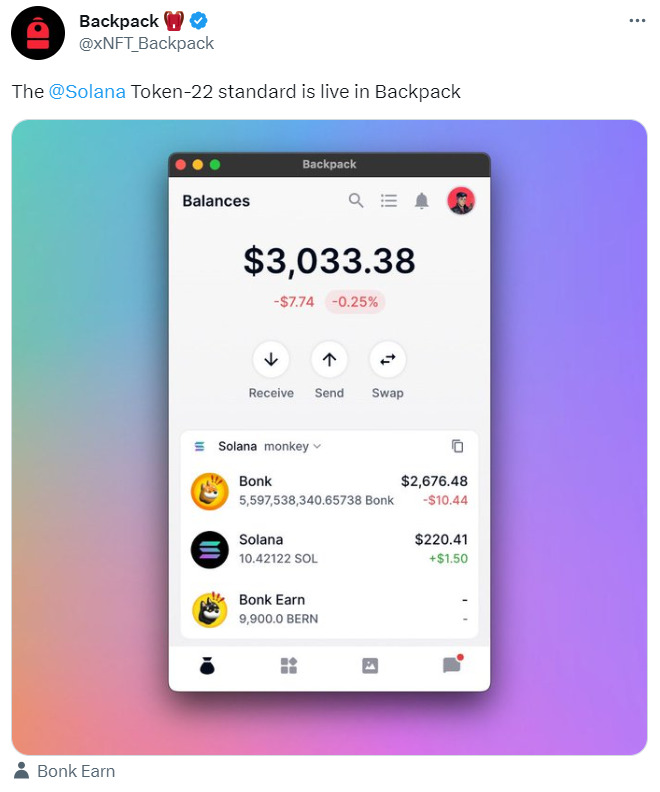
Top Web3 teams like BackPack have already integrated SPL 2022 tokens into their wallet app.
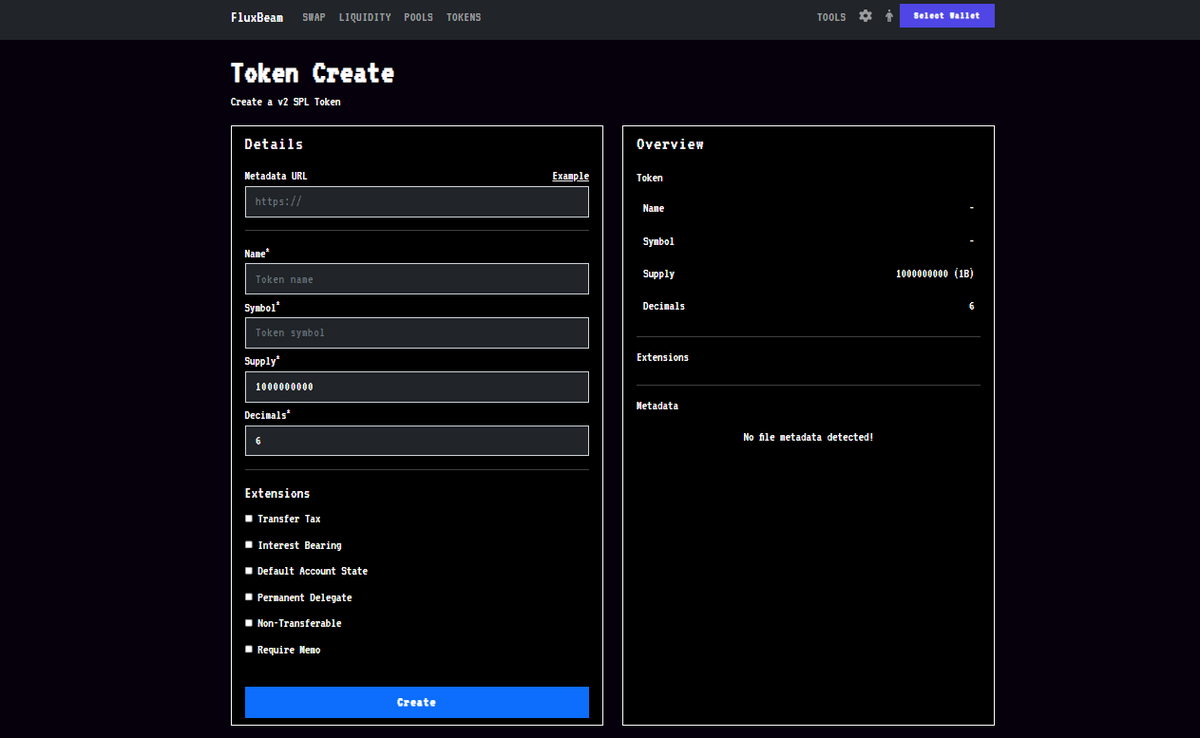
Meanwhile, emerging decentralized exchanges like FluxBeam have built full support for the new token standard and created a simplistic token creator dApp that guides anyone through launching their very own SPL token on Solana.
Solana SPL-Token 2022 Concerns
While the Solana Token 2022 program has been deployed by a few applications and projects on the mainnet, Solana Labs has confirmed that the codebase (written in Rust) hasn’t been officially audited yet.
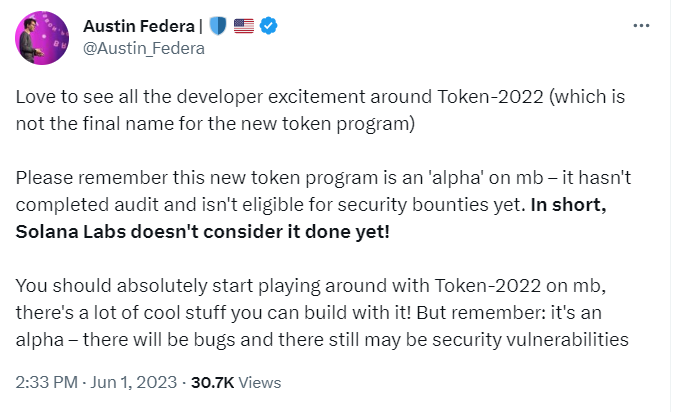
Experts like Austin Federa, Solana Foundation’s Head of Strategy, have encouraged developers to experiment with the new SPL token standard but ask users to remember that bugs are expected, and vulnerabilities may be present.
Additionally, the Permanent Account Delegate extension raises some eyebrows. Giving a centralized body control over the tokens in someone else’s wallet seems like a violation of crypto’s ethos, despite its potential real-world use cases.
Solana SPL 2022 Pros and Cons
Now that we’ve unraveled the mysteries of the SPL 2022 token standard let’s review the pros and cons of this huge step in Solana’s growth.
Pros
- Expanding DeFi on Solana – SPL 2022 brings a wealth of new utilities and tools developers can leverage to build engaging and innovative dApps on the Solana blockchain.
- Improved Security – Using Zkproof technology, extensions like confidential transfers mean that your data and transactions are kept safe from prying eyes when transferring funds and data on the network.
- Real-world applications – Since day one, Solana was built for scalability and mass adoption. Extensions like memo-required transfers, SoulBound tokens, and interest-bearing tokens might seem insignificant, but they set a foundation for TradFi products and services to be brought on-chain.
Cons
- Unaudited token standard – According to Solana Labs, SPL 2022 hasn’t been fully audited yet and could still contain bugs and vulnerabilities
- Potentially abusive delegate accounts – Delegate accounts have the authority to manage specified token addresses, regardless of what wallet they’re in.
On the Flipside
- While the Solana Token 2022 brings plenty of new utility to the Solana ecosystem, these tools have already been available on most EVM networks for years. Solana may be playing catch-up from a utility perspective, but it remains the most performant Layer 1 blockchain in crypto.
Why This Matters
Despite the simplicity of its previous token standard, Solana still averages almost as many daily active addresses as Ethereum while also processing 20x more daily transactions. Adding a more creative and complex SPL token standard is a massive step for the growth and development of the Solana blockchain.
FAQs
Both SPL and ERC-20 tokens are digital assets that live on a blockchain. ERC-20 tokens represent cryptocurrency based on Ethereum and other EVM networks, while SPL tokens represent both cryptocurrencies and NFTs on the Solana blockchain.
Token 2022 is a new SPL token standard that outlines the rules and conditions for digital assets stored on the Solana blockchain.
The utility token of Solana is SOL. SOL is used to pay transactions, secure the Solana blockchain, and is also considered a currency of exchange for goods and services on the network.
